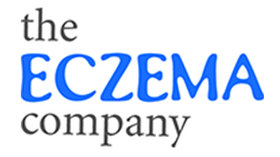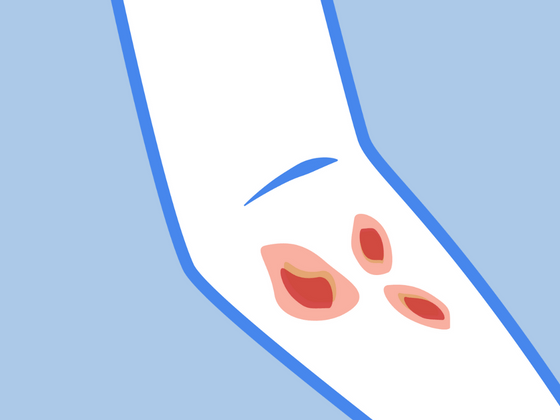Have you ever noticed scaly patches around the sides of your nose? Or inflamed, flaking skin around your nostrils? You might be experiencing seborrheic dermatitis.
Seborrheic dermatitis (or seborrhoeic dermatitis) is a common form of eczema that typically develops on oily areas of the skin. While this skin condition often clears up, living with inflamed skin on your face can leave you feeling self-conscious, stressed, or uncomfortable. That's why, throughout this post, we're going to explore everything you need to know about:
-
Why seborrheic dermatitis develops around the nose
-
The key symptoms of seborrheic dermatitis
-
The best treatment plan for combating seborrheic dermatitis
Keep reading to learn more about how to soothe irritated skin effectively and naturally, helping you manage flare-ups and feel your best.
Seborrheic Dermatitis Nose: What Are The Causes?
Seborrheic dermatitis is a variety of eczema, an umbrella term that refers to a set of chronic skin conditions commonly caused by a combination of genetic and environmental factors rather than one exact cause.
The most common form of eczema is atopic dermatitis, characterized by intensely itchy, scaly patches caused by an overactive immune system.
In the case of seborrheic dermatitis, flare-ups are often triggered by an inflammatory reaction to an excess of yeast on the skin's surface, leading to a fungal infection. This is most often driven by:
-
Emotional stress or exhaustion
-
Hormonal changes
-
Illness
-
Harsh chemicals within skincare and detergent products
-
Sudden weather changes
-
Certain medications
Those with a family history of eczema are more likely to develop seborrheic dermatitis. People living with HIV, eating disorders, or Parkinson's Disease may also be more susceptible to this skin condition.
What Are The Main Symptoms of Seborrheic Dermatitis?
Like atopic dermatitis, seborrheic dermatitis is likely to manifest differently for every individual.
Unlike atopic dermatitis, however, this skin condition develops explicitly in areas of the body with oily skin, such as your scalp, sides of the nose, lower back, groin, under the breasts, or around the eyebrows.
Some common symptoms of seborrheic dermatitis include:
-
Oily patches of greasy, yellow scales and flaking skin
-
Skin inflammation
-
Itching
-
Skin discoloration that may appear darker on black skin and lighter on white skin
-
Stubborn dandruff across the scalp
-
People with black skin are more prone to developing seborrheic dermatitis petaloid, which is characterized by a ring-shaped rash in severe cases.
-
Severe symptoms of seborrheic dermatitis include the development of lesions filled with sebum, crusting skin, immunodeficiency of affected skin, and increased risk of infections.
Rest assured, it's a myth that this eczema is connected to hair loss or the increased risk factors of developing skin cancer.
Seborrheic Dermatitis In Babies
Infants with seborrheic dermatitis may develop cradle cap, a common skin issue with greasy scales across a baby's scalp.
Seborrheic dermatitis is also not to be mistaken with other types of eczema, such as diaper rash, a chronic form of contact dermatitis causing dryness and intense itching across the affected area.
Treating Seborrheic Dermatitis on the Nose?
Whether you're coping with mild cases of seborrheic dermatitis or more severe symptoms, there are several steps you can take to help prevent flare-ups and restore your skin health.
In severe cases, according to clinical dermatology, seborrheic dermatitis symptoms may be treated with over-the-counter oral medications, topical corticosteroids, or medicated shampoo. In infants with cradle caps, treatment will typically involve loosening scaly patches through petroleum jelly or mineral oil.
There are, however, several gentler, steroid-free, and natural treatment methods you can try as an effective alternative.
Lifestyle Changes
Like atopic dermatitis, we know that seborrheic dermatitis is often triggered by periods of high stress, emotional upset, disruptive change, or illness.
One of the most effective ways to help soothe your symptoms is to find relief from stress, whether by taking a break from demanding activities, practicing self-care, or engaging in stress-relief techniques such as meditation, light exercise, or spending time out in nature.
Emotional stress also induces chronic immune system activation, so finding ways to soothe your mental health, rest, and recover can also play a crucial role in healing your seborrheic dermatitis.
Change Your Skincare Routine
Particularly if you experience greasy skin or oily hair, you might feel tempted to use skincare and haircare products that contain harsh chemicals, stripping your skin of natural oils. But when it comes to treating seborrheic dermatitis, this can make your symptoms even worse.
Scalp Seborrheic Dermatitis
To help combat greasy scales across your scalp, we'd recommend switching to an anti-dandruff shampoo such as the Emily Liquid Soap Soother, a specially formulated natural body wash for eczema and cradle cap using the principles of Chinese medicine.
The Organic Aloe Vera for Eczema Skin Soothing Spray is another soothing product if you're struggling with dandruff or your baby has a cradle cap. This non-greasy formula is excellent for use on the scalp and face. Store it in the refrigerator between uses for an extra cool treat and to beat the itch with aloe vera.
Other ingredients to look out for when shopping for dandruff shampoos include zinc pyrithione and salicylic acid, which prevent flare-ups by controlling yeast growth and bacteria on the scalp.
Facial Seborrheic Dermatitis
Whether you're coping with atopic dermatitis or seborrheic dermatitis, to soothe your irritated skin, we'd suggest searching for gentle, fragrance-free skincare products that are deeply nourishing and moisturizing for dry skin patches.
For example, the Satya Eczema Cream is an oil-based balm containing anti-inflammatory colloidal oats, which are medically proven to reduce eczema symptoms. Created in a convenient glide stick format, this product is excellent for finding the relief you need on the go! Rub into affected areas to feel instant relief, even on delicate areas like the eyelids and the sides of the nose.
Time To Call The Doctor?
If your seborrheic dermatitis symptoms persist, we urge you to contact a medical professional for expert advice on creating a unique treatment plan.
Many types of eczema, including seborrheic dermatitis, tend to follow a pattern of flaring and clearing that can last a lifetime, so ongoing treatment may be required to manage your symptoms in the long term.
Getting in touch with your doctor may also be the best way to ensure you receive the correct diagnosis for your skin condition, mainly because similar symptoms, such as flaking skin, dry skin, and skin inflammation, will characterize many types of eczema.
Heal Your Seborrheic Dermatitis Today
Follow these tips to help you identify and soothe symptoms of seborrheic dermatitis today.








